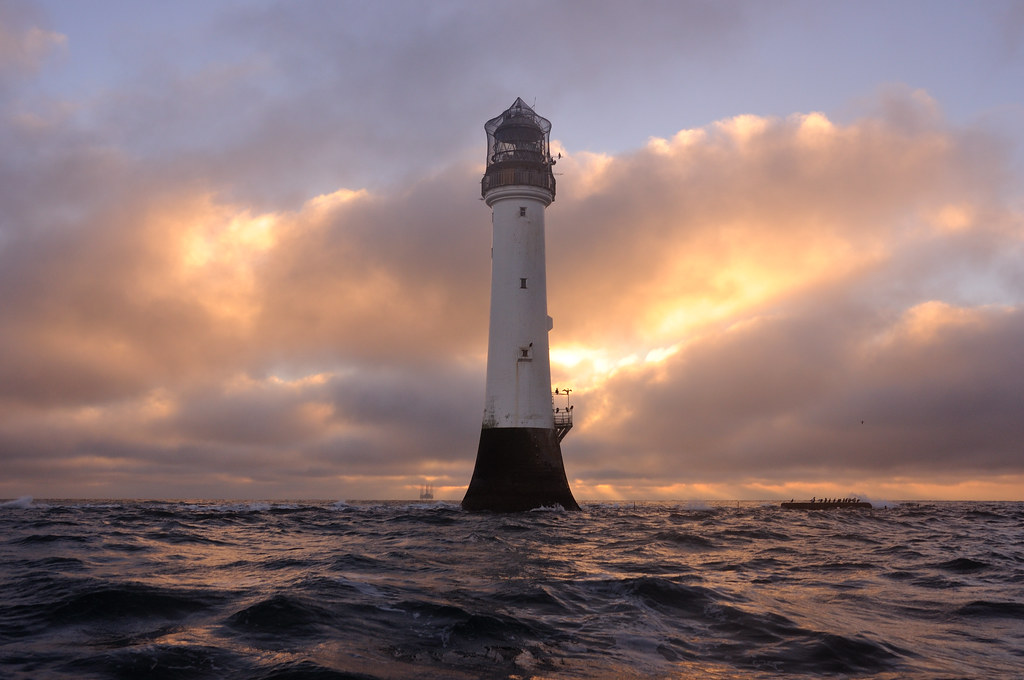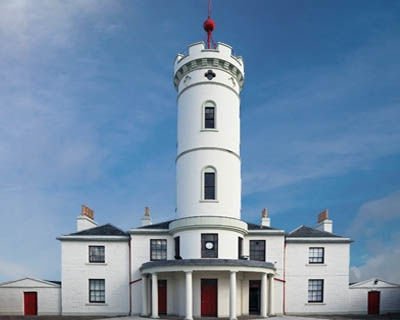So today a thought a wid tell ye aw aboot a cool wee Scottish Landmark just aff the coast o Arbroath. It& #39;s a long wan but worth a read.
This is the Bell Rock Lighthouse and it& #39;s the oldest existing Rock Lighthoose in Scotland.
This is the Bell Rock Lighthouse and it& #39;s the oldest existing Rock Lighthoose in Scotland.
The tower on the Bell, or Inchcape, rock. This is a long and dangerous reef in the North Sea and in the fairway o vessels sailing to and from the Firths o Tay and Forth. The Bell Rock is considered one o the biggest engineering feats o the 19th Century.
The reef was originally known as the Inchcape until the abbot o Arbroath set up a bell to oan it tae warn passing sailors o the danger. The Bell Rock Lighthouse itself was designed by noted Lighthouse engineer Robert Stevenson between 1807 and 1810.
The tower stands at 115ft tall and it& #39;s light is visible from 35 statute miles inland. The lighthouse operated in tandem with an on shore station, the Bell Rock Signal Tower built in 1813 at the mouth o Arbroath harbour. The building now houses the Signal Tower Museum (pictured).
The challenges of building the lighthouse were numerous and huv led tae it being described as one o the Seven Wonders o the Industrial World. The tower was first lit in 1811 and manned up until it& #39;s automation in 1988.
The lighthouse has an interesting story wae some accidents over the years it was built. One young worker drowned and a stone mason had tae have a finger amputated follow an accident with the beam crane on the rock.
A builder wis also severely injured after he wis caught under a collapsed crane. In its last year o construction, while the men were staying at the beacon house, a 7 hour storm hit and a worker wis lost. His body was never found.
Stevenson hired 60 men fur the build including an onsite blacksmith. The site was covered fur 20 hours a day by 12ft o water so the men lived oan a ship moored 1 mile aff the rock until accomodation was built.
During its time in operation the lighthouse has only recorded two shipwrecks. The HMS Argyll during wartime blackouts in 1915 and the Banff registered cargo vessel Rosecraig which ran aground in fog in September 1908 and sank. Her crew o sever were saved.
The HMS Argyll wis lost as the lighthouse had been ordered tae switch it& #39;s lights aff during the First World War for fear o assisting enemy U-boats. The light wis only turned oan wae special permission.
In October 1915 the HMS Argyll sent a signal requesting the light he turned oan and proceeded under the impression the signal was received, but it hadn& #39;t been and the light stayed aff. This led to the Argyll running aground and suffering serious damage tae the hull.
Two destroyers HMS Hornet and HMS Jackal went tae assist in the rescue o the Argyll& #39;s crew. All were saved and all valuable items onboard were salvaged, including her 6 inch gun. She was then blown up by the naval salvage team.
There was also sadly the loss o the RAF Bristol Sycamore helicopter XG501 on 15 December 1955 during a sea-winching exercise. The helicopter& #39;s tail rotor struck the anemometer in the top of the lighthouse, and as a result it crashed intae the sea. Sadly both crew members died.
The Bell Rock is a fantastic piece o Scottish engineering history and has much more tae it& #39;s story. A suggest a wee visit tae the Signal Tower Museum tae find oot more (once it reopens of course).
Hope ye enjoyed the story folks. Am enjoying talking up Scotland tae ye all.
Hope ye enjoyed the story folks. Am enjoying talking up Scotland tae ye all.

 Read on Twitter
Read on Twitter



